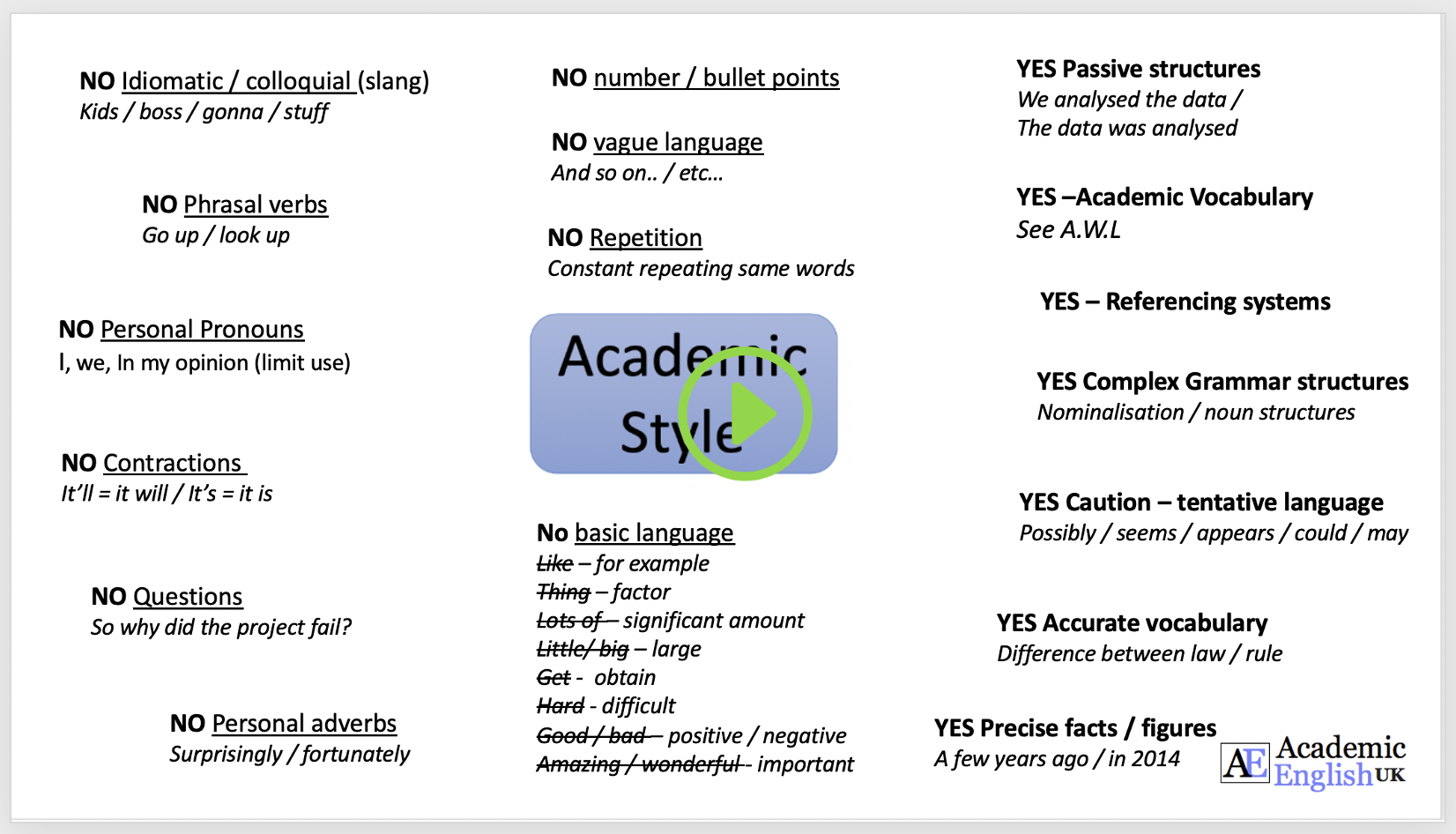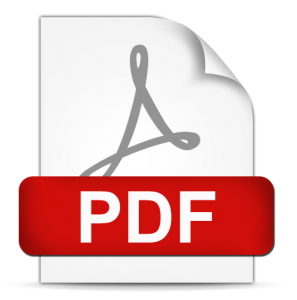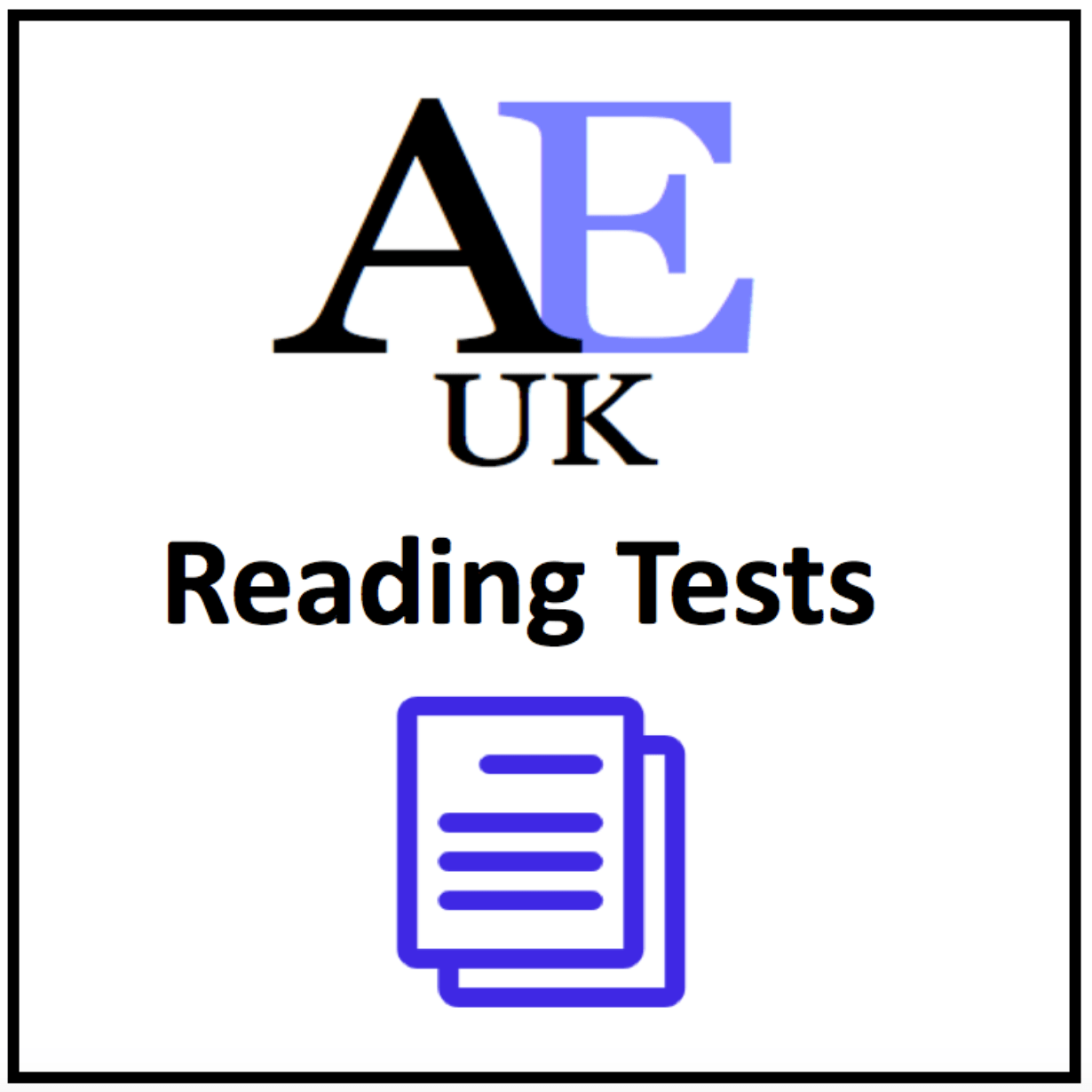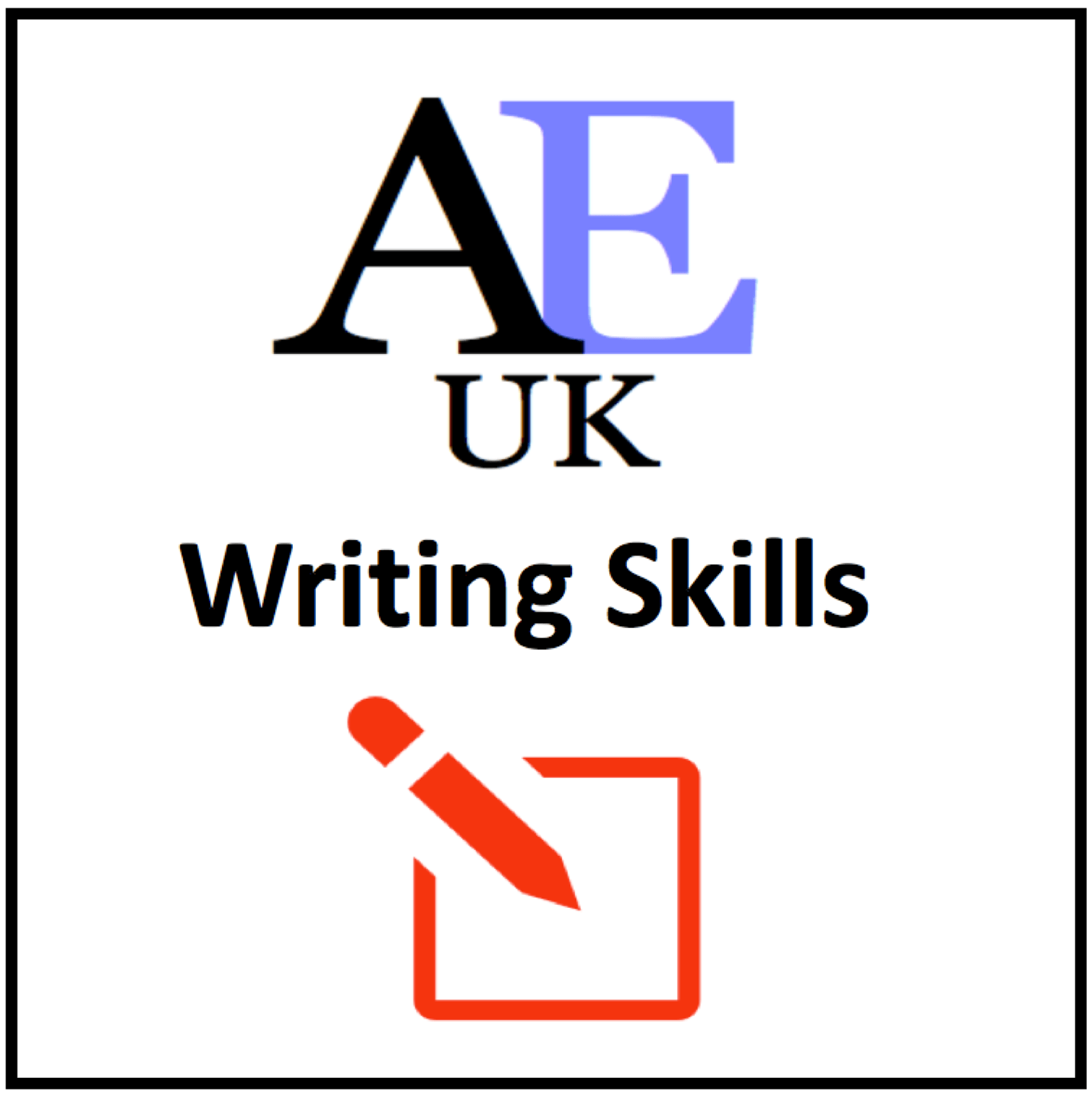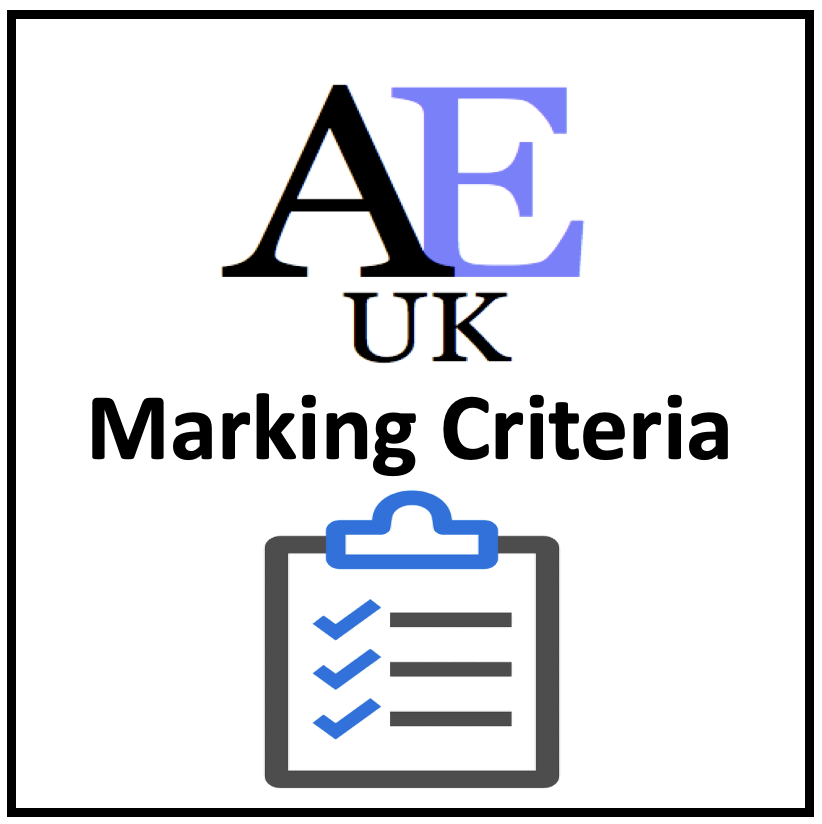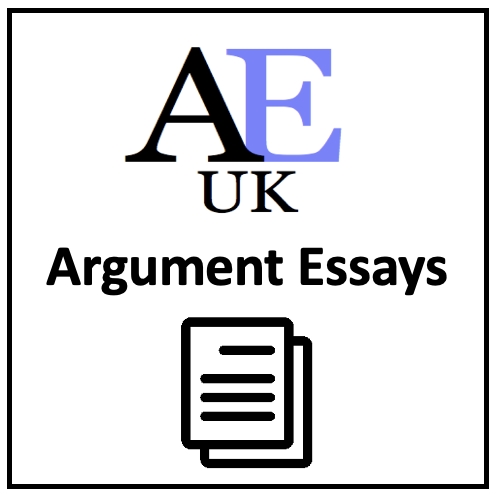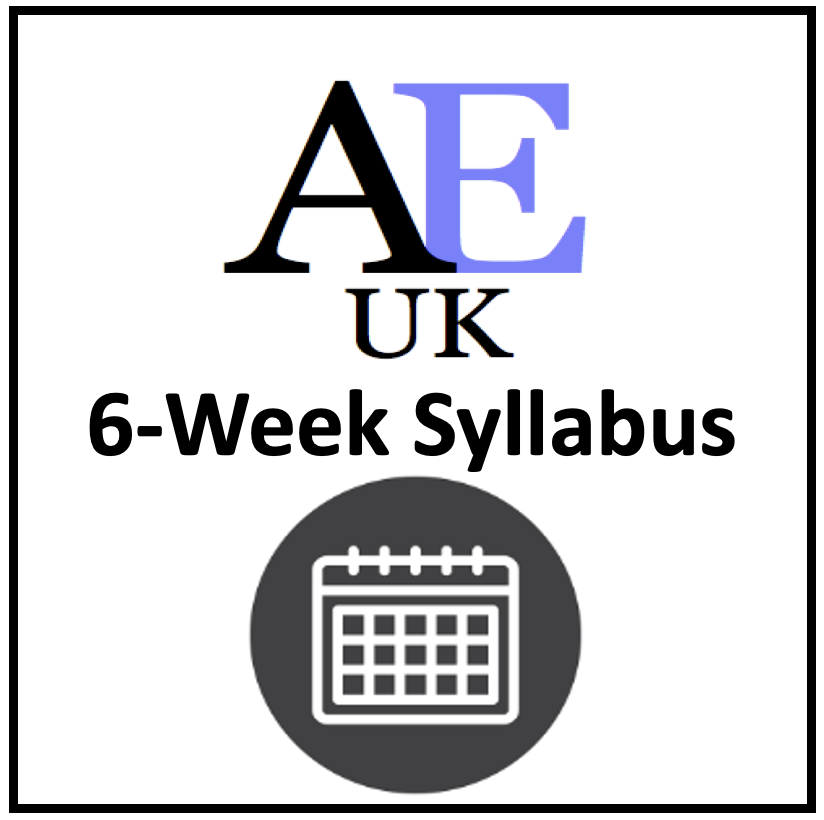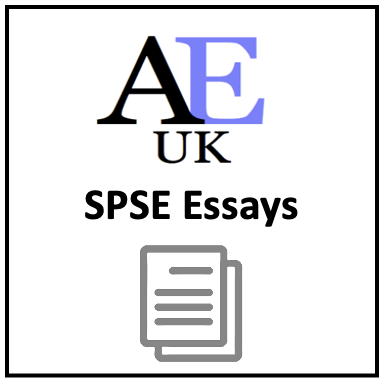RESOURCES: Reading / Writing / Listening / Speaking / Argument / SPSE / Reading Tests / Summary / Dictogloss / Grammar / Vocab / Critical Thinking / Instant Lessons / Medical English / Graphs / New 2024 /
Academic Writing Style – key points
Academic style is the conventions often associated with academic writing. Although there is much debate over what exactly academic style is, generally there is an agreement among most Academic English tutors of the key elements that should or should not be included. The following is a list of the do’s and don’ts…
Academic Style Video
If you can’t access this YouTube video in your country, go here
Academic Style Downloads
Click on a link for the download:
Academic Style is…
… the conventions often associated with academic writing. Although there is much debate over what exactly academic style is, generally there is an agreement among most Academic English tutors of the key elements that should or should not be included. The following is a list of the do’s and don’ts…
Key points of academic style writing
NO Idiomatic / colloquial (slang)
Kids / boss / gonna / stuff
NO Phrasal verbs
Go up / look up
NO Personal Pronouns
I, we, In my opinion (limit use)
NO Contractions
It’ll = it will / It’s = it is
NO Questions
So why did the project fail?
NO Personal adverbs
Surprisingly / fortunately
NO Repetition
Constant repeating same words
NO vague language
And so on.. / etc…
NO number / bullet points
NO basic language
Like – for example
Thing – factor
Lots of – significant amount
Little/ big – large
Get – obtain
Hard – difficult
Good / bad – positive / negative
Amazing / wonderful – important
YES Formal Linkers
(In addition, Moreover, Consequently…)
YES Academic Vocabulary
See A.W.L
YES Referencing systems
(Harvard / APA / Chicago…)
YES Passive structures
We analysed the data /
The data was analysed…
YES Complex Grammar structures
[Cohesive devices – independent + subordinator + dependent clause]
Although / Despite / since…
YES Nominalisation / noun forms
The data was analysed (passive)
An analysis of the data showed… (nominalised)
YES Noun phrases
adjective + noun / quantifier + noun / noun + noun structures
YES Caution / hedging – tentative language
Possibly / seems / appears / could / may
YES Accurate vocabulary
Difference between law / rule
YES Precise facts / figures
A few years ago / in 2014
Download the infographic image – here
Practice in Academic Style for writing essays
Example
(a) Another thing to think about is the chance of crime getting worse.
1. First highlight informal words / non-academic style:
(a) Another thing to think about is the chance of crime getting worse.
2. Use synonyms for informal words
Thing = area / aspect / feature / point
Think about = consider / note / understand / acknowledge
chance = possibility / probability / situation
getting = becoming
3. Rewrite the sentence
Another aspect to consider is the possibility of crime becoming worse
4. Grammar change: noun phrase / nominalisation structure
Another aspect of consideration is the possibility of crime becoming worse
Academic Style Lessons
Academic Style 1
Academic Style 1: 20 key features to writing
This lesson brainstorms academic style / formality in writing. Teacher conducts feedback by using visual highlighting & explaining the concepts. There are also 10x practice transformation exercises from informal to formal. (Example). It includes a PowerPoint: PPT Link in download.Webpage link.Time: 60mins. Level ***** [B1/B2/C1] // TEACHER MEMBERSHIP / INSTITUTIONAL MEMBERSHIP
Academic Style 2
Academic Style 2: Paragraph analysis, comparison and discussion
This lesson compares two paragraphs on CSR (informal and formal), discusses the conventions of academic style and finishes with a sentence re-writing activity.. (Example) Time: 60mins. Level ***** [B1/B2/C1] / Webpage link. / TEACHER MEMBERSHIP / INSTITUTIONAL MEMBERSHIP
Academic Style 3
Academic Style 3: Vocabulary 1 (AWL & Nominalisation)
This lesson is for general academic classes. It focuses on two key areas of academic writing: AWL and nominalisation. There are three worksheets comprising of a number of different activities to practise categorisation and reformulation at sentence and paragraph level. (Example) Time: 60mins. / Webpage link /Level ***** [B1/B2/C1] TEACHER MEMBERSHIP / INSTITUTIONAL MEMBERSHIP
Academic Style 4
Academic Style 4: STEM Vocabulary 2 (AWL & Nominalisation)
This lesson is for STEM classes (Science, Technology, Engineering and Maths). It focuses on two key areas of academic writing: AWL and nominalisation. There are three worksheets comprising of a number of different activities to practise categorisation and reformulation at sentence and paragraph level. (Example) Time: 60mins. / Webpage link /Level ***** [B1/B2/C1] TEACHER MEMBERSHIP / INSTITUTIONAL MEMBERSHIP
Correction Code
Use the correction code when marking students’ writing work. This is a 3-way system. 1) Tutor marks the mistakes using the correction code and returns to the student. 2) Student makes correction in a different colour pen and returns to the tutor. 3) Tutor checks the corrections and returns to the student.
Use the correction code ‘Inf’ (Informal) for academic style.
Correction Code
Teachers: This code can be used to correct student’s work. Underline the mistake and use one of the symbols to indicate the error. Students correct the mistake using the code and return to the teacher to check. Webpage link
x
More Writing Resources
More digital resources and lessons
Readings
online resources
Tests
online resources
Grammar
online resources
Medical English
online resources
New for 2024
online resources
DropBox Files
Members only
Writing
online resources
Summary
online resources
Vocabulary
online resources
Instant Lessons
online resources
Marking Criteria
online resources
OneDrive Files
Members only
Listening
online resources
Argument
online resources
Critical Thinking
online resources
Topic-lessons
online resources
Feedback Forms
online resources
6-Week Course
Members only
Speaking
online resources
SPSE Essays
online resources
Free Resources
online resources
Charts and graphs
online resources
AEUK The Blog
online resources
12-Week Course
Members only

